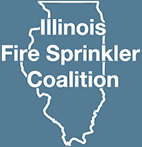March 28, 2008
In the year 2006, 19% of all reported fires occurred in one- and two-family structures; however, these fires caused 66% (2,155) of the fire deaths in the US1. In addition, more than 25% of firefighter on-duty deaths are associated with residential fires2. This means that approximately 25 firefighter deaths occur during responses to residential fires each year, since on average, there are about 100 on-duty firefighter deaths annually3. Despite the fact that these figures represent improvement over the last 30 years, they continue to be appalling. Such losses are unacceptable.
Since the 1970’s, USFA has promoted research studies, development, testing, and demonstrations of residential fire sprinkler systems and smoke alarms. These efforts, in concert with heroic efforts by many organizations and individuals, have resulted in the adoption of requirements to install smoke alarms in all new residential construction. In many jurisdictions, the retrofit of smoke alarms into existing residential occupancies has been mandated. Together, these efforts have saved many lives.
The results have been different, however, with respect to residential fire sprinkler systems; only a few jurisdictions have mandated their installation in new construction, and none have mandated retrofit of existing one and two family housing stock. The Center for Fire Research at the National Institute of Standards and Technology has studied the impact of both smoke alarms and sprinklers in residential occupancies4,5, and estimates that:
When fire sprinklers alone are installed in a residence, the chances of dying in a fire are reduced by 69%, when compared to a residence without sprinklers.
When smoke alarms alone are installed in a residence, a reduction in the death rate of 63% can be expected, when compared to a residence without smoke alarms.
When both smoke alarms and fire sprinklers are present in a home, the risk of dying in a fire is reduced by 82%, when compared to a residence without either.
Much has been written about the reduction of residential fire deaths due to improvements in building codes and the installation of smoke alarms. Without a doubt, these have had a substantial impact on the home fire problem. The annual number of fire deaths in residential occupancies continues to decline. The trend in fire death data, however, shows that the number of residential fire deaths is declining at a slower rate over the past 10 years than it did in the period 1977 through 1995.
Full-scale fire tests in residential settings suggest an explanation for this slowing in the rate of decline in residential fire deaths. The available time to escape a flaming fire in a home has decreased significantly (i.e., from 17± 6 minutes in 1975 to 3± ½ minute in 2003)6. This decrease in time to escape has been attributed to the difference in fire growth rates of the representative samples of home furnishings used in the two studies6. In short, it appears that a fire involving modern furnishings grows faster than a fire involving older furnishings. The practical impact of this finding is clear – smoke alarms alone may not provide a warning in time for occupants to escape a home fire.
The U.S. Fire Administration’s mission is to reduce life and economic losses due to fire and related emergencies, through leadership, advocacy, coordination, and support. In fulfilling this mission, we have carefully reviewed the data and the relevant research to formulate this official statement:
It is the position of the U.S. Fire Administration that all citizens should be protected against death, injury, and property loss resulting from fire in their residence. All homes should be equipped with both smoke alarms and automatic fire sprinklers, and all families should have and practice an emergency escape plan. The USFA fully supports all efforts to reduce the tragic toll of fire losses in this nation, including the proposed changes to the International Residential Code that would require automatic sprinklers in all new residential construction.
- Ahrens, Marty, Trends and Patterns of U.S. Fire Losses, National Fire Protection Association, Quincy, MA, September, 2007.
- Firefighter Fatality Retrospective Study, Report FA-220, Federal Emergency Management Agency, United States Fire Administration, National Fire Data Center, Emmitsburg, MD, April 2002.
- Firefighter Fatalities in the United States in 2005, Report FA-306, Federal Emergency Management Agency, United States Fire Administration, National Fire Data Center, Emmitsburg, MD, August, 2005.
- Ruegg, Rosalie T. and Sieglinde K. Fuller, A Benefit-Cost Model of Residential Fire Sprinkler Systems, NIST Technical Note 1203, National Institute of Standards and Technology, Gaithersburg, MD, November 1984.
- Butry, Davit T., M. Hayden Brown and Sieglinde K. Fuller, Benefit-Cost Analysis of Residential Fire Sprinkler Systems, NISTIR 7451, National Institute of Standards and Technology, Gaithersburg, MD, September 2007.
- Performance of Home Smoke Alarms, Analysis of the Response of Several Available Technologies in Residential Fire Settings, NIST Technical Note 1455, National Institute of Standards and Technology, Gaithersburg, MD, December 2003.


